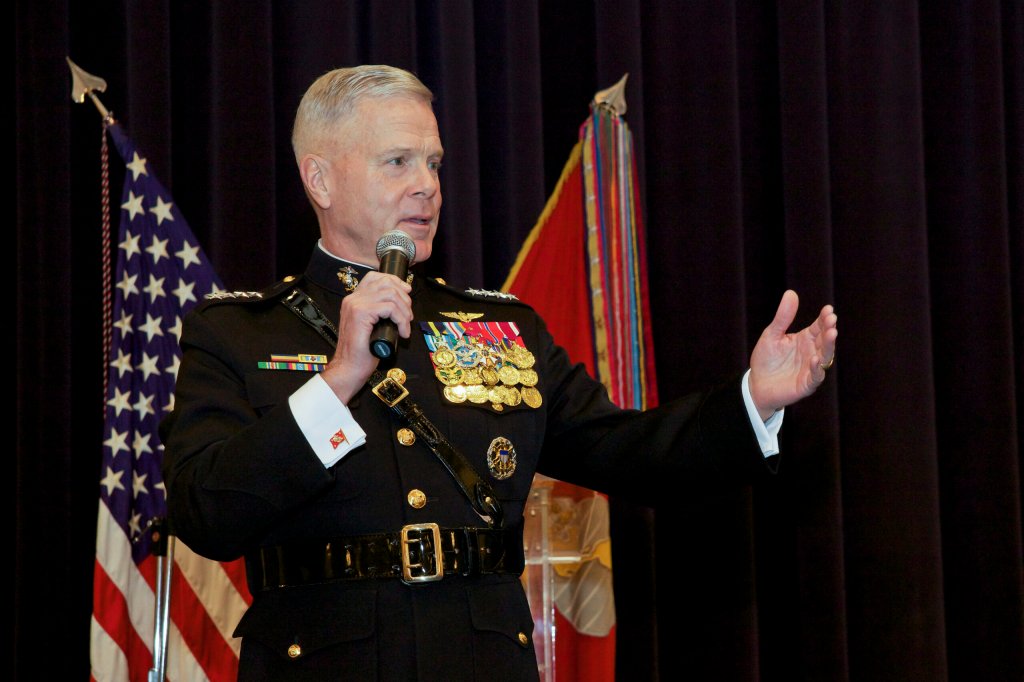When one thinks of Marines and conflict, it generally evokes images of battle and a hostile enemy force. One might be surprised to learn that many instances of conflict can arise within the ranks, particularly among staff members of a unit. The Marine Corps’ premier doctrinal publication (MCDP-1 Warfighting) describes friction as “that which makes the inherently easy difficult.” The Corps’ cultural environment produces a certain approach and response to organizational conflict. Listed below, you will find a few perspectives Marines take when anticipating or responding to conflict, though perhaps unsuitable for the faint of heart.
Here is a Marine’s approach to organizational conflict
If the Colonel is interested, the Captain is fascinated
Whether civilian or military, every organization has a rank structure or hierarchy. A staff or the employees will fare much better if they are attuned to the interests and concerns of the boss. It is a way to anticipate future tasks and mitigate potential disasters while gaining the confidence of the old man. One thing is for sure, a staff that neglects to respond to hints and suggestions from the Commanding Officer will find things will get real uncomfortable, real quick.
“Bad news don’t get better with time.”
Yes, that may be poor grammar, but it is an enduring maxim. Some people may think the situation will resolve itself, be taken care of at a lower echelon, or simply go away. This is rarely the case. More often than not, the situation continues to balloon out of control. The longer you wait to inform the boss, the less time he or she and the staff have for damage control. There are certain situations that are trigger lines and require an immediate response. One danger of delaying bad news is for your boss to hear about it from their boss or some outside source. As the Guadalcanal veteran said in response to another bonsai charge, “That ain’t good.”
Fire the red star cluster
Pyrotechnics are used in battle as part of the signaling plan. Think of it as a single firework. There are various colors, and they are generally fired from a handheld aluminum tube. Once employed, they can be seen by all hands. The signaling plan may be something like a green star cluster to directing shifting the machine gun base of fire, or a red star cluster to initiate the assault element’s maneuver. The bottom line is, everyone can see it, it’s a big deal, and it elicits specific, aggressive action. When a subordinate leader looks at their fellow staff member and says, “Fire the red star cluster,” it indicates things are bad, and everyone must orient to the problem NOW! It activates and motivates the team while creating a unity of effort.
Pain retains

This simple principle is introduced during boot camp and never goes away. It is all stick, no carrot. “Oh, you want to roll your eyes? PUSH!” “Oh, we can’t have everyone in formation at 0730? Tomorrow we will all be here at 0530.” The idea is to make the consequences so incredibly miserable that in the future, the individuals (or group) will make every effort not to repeat the infraction. Group punishment (or consequences) results in individuals generating accountability for themselves and their fellow team members. This isn’t the most popular method, but it has proven effective since at least 1775.
If the baby is ugly
The incomplete phrase, “If the baby is ugly…” has the unspoken conclusion that “it belongs to someone.” The tactless humor here conveys that someone has responsibility or ownership over a situation. Owning the problem, as opposed to passing the buck, is one of the primary indicators of good leadership and an effective organization. In the Marine Corps, an officer is responsible for everything a unit does or fails to do, that means good or bad. This concept applies to leaders of all ranks, at all levels. Don’t look for someone or some other unit to blame. Explain but don’t excuse. Own it.
Organizational conflict, friction and strife are going to arise. We are only human, after all. Tackling the issues head-on with unhesitating determination is the best method to remedy the drama. The five proven approaches listed above are how Marines handle internal conflict. They will serve you well.


